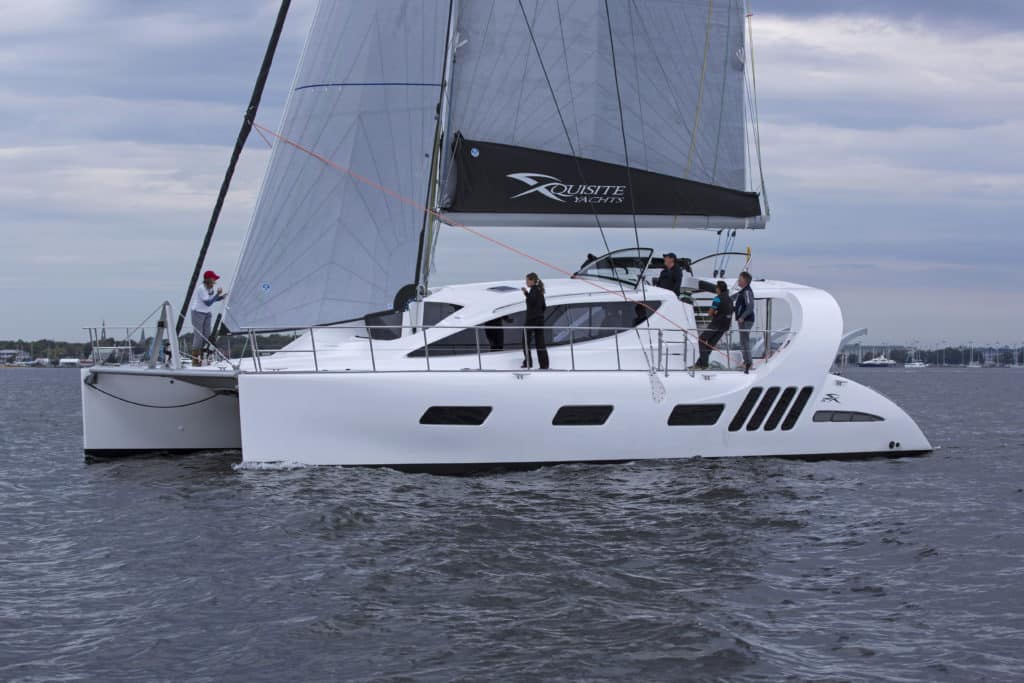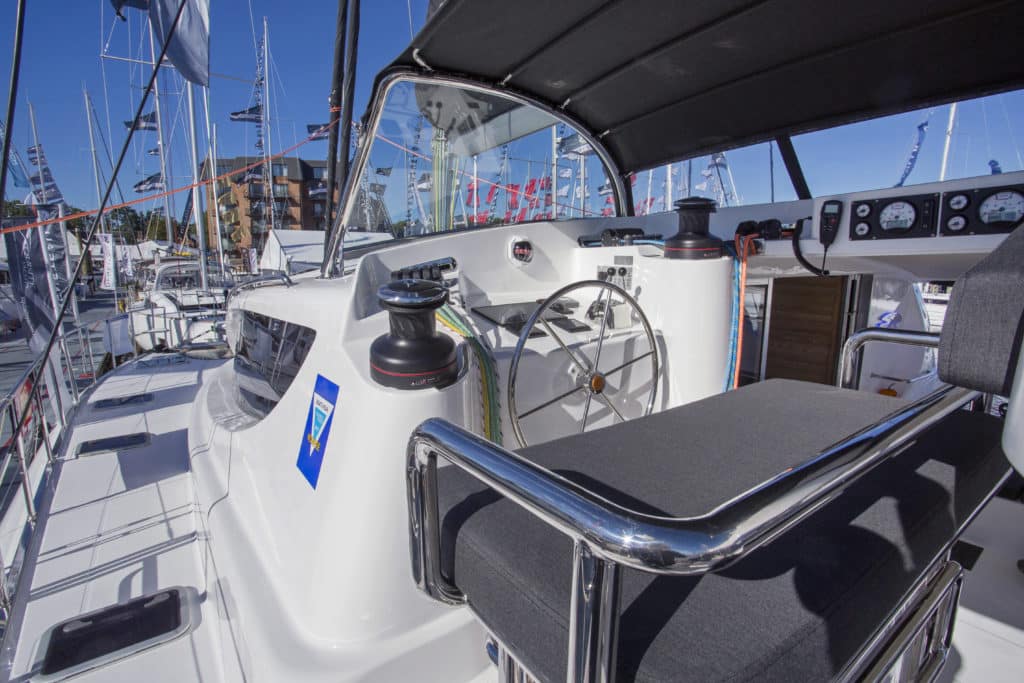
Let’s begin by saying the X5 catamaran from Xquisite Yachts, with its soaring cockpit arch, sweeping curves in the cabin top and array of windows, is at first glance, well, distinctive.
But after spending an hour or so digging through the South African-built bluewater cruiser while it was tied to the dock at the U.S. Sailboat Show in Annapolis, Maryland, and another sailing it in a decent breeze on Chesapeake Bay, our team of Boat of the Year judges came up with a better description of the X5: Most Innovative.
“It’s just really, really impressive the number of seagoing details built into this boat,” said judge Tim Murphy. His colleague, systems specialist Ed Sherman, was smitten as well. “In terms of systems, I mean, we’ve got one of the best applications of digital technology that I’ve ever seen on a boat applied on this yacht — with triple redundancy, which is aircraft-grade, for all intents and purposes,” said Sherman.
Indeed, the X5’s Mastervolt CZone electrical system, integrated with a full suite of Garmin electronics, is impressive. But more so are the touches added by Xquisite founders Tamas and Sarah Hamor, who brought their experience from 10 years of circumnavigating to bear in the feature-rich design of the boat. Detailed maintenance schedules for every mechanical device, owner manuals and even the serial numbers of all equipment are stored on an iPad that comes with each vessel. And from that iPad, an owner has complete control of all onboard systems.
BOTY judge Carol Hasse appreciated some of the Hamors’ more practical knowledge. Accessibility to things such as through-hull fittings, shaft seals and other mission-critical gear is excellent, something Tamas insisted on, having fixed just about everything on his own boats. At the helm station, raised to port, all control lines are led to a central bank of electric winches controlled by foot pedals rather than buttons so the skipper’s hands are free for other work. Overhead of the fixed-glass windscreen, a clever battened bimini can be easily slid open so you can view the sails above, or closed with the sweep of an arm if the weather turns.

The rig on the X5 is made of aluminum rather than carbon fiber because, says Tamas, the former is more forgiving in electrical storms. And the sail plan — square-top main, working self-tacking jib set on an inner forestay and furler, and big genoa forward on a second Harken furler — is designed to be easily handled alone while the other half of the crew sleeps below.
The X5’s lineage, like its design, is closely linked to the Hamors. Crossing the Pacific on a Leopard catamaran, they lost their mast in French Polynesia, replaced it and carried on until they arrived in Australia, where the boat was sold. Looking for their next cruising cat, they purchased a Rudolf Junker-designed Dean catamaran, but the South African builder went out of business before the boat was finished. Eventually, the Hamors finished the boat themselves and sailed off; in the meantime, a group of workers and financial interests regrouped to form Phoenix Marine, which builds the X5 exclusively for Xquisite Yachts.
Construction of the boat appeared to be top-notch. Vinylester resin is used throughout. Hulls are solid glass below the waterline and cored above; the deck and cabin top are also cored, as is all of the furniture.
The boat we tested featured an owners cabin with en suite head and shower that filled the starboard hull, and double cabins with en suite heads and showers to port (a four-cabin charter layout is also offered). The X5, listed at $1.2 million, comes loaded with a watermaker, a genset, a well-provisioned galley and the aforementioned electrical and electronics systems — in essence, everything you’d need to step aboard and go cruising.
With North sails set in 8 to 10 knots of breeze, we made 7 knots closehauled and watched the speedo jump to 7.9 on a reach. “That Xquisite sure sailed beautifully,” said Hasse. “I mean beautifully.”
Mark Pillsbury is CW’s editor.








